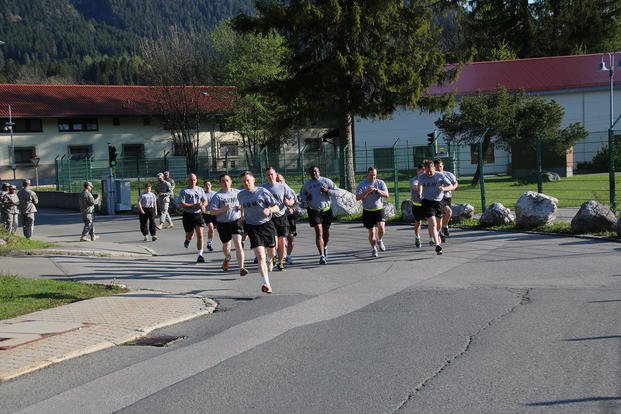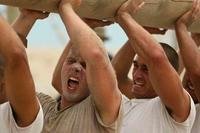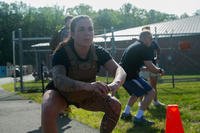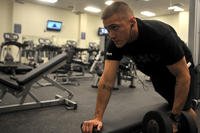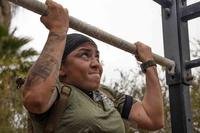Many of you will understand the use of CARVER immediately. After serving in special ops and as a security consultant, technical writer and military fitness writer, it is easy to pull from different worlds looking for similarities. When in the military or security, you can think of vulnerabilities as opportunities or weaknesses as easy targets. Fitness is not much different.
Here is the CARVER system for grading such topics:
- Criticality
- Accessibility
- Recuperability
- Vulnerability
- Effect
- Recognizability
All of these get a score from one to five; the higher score means the better target. This is a system used since World War II and aids in decision-making and devoting assets to future targets. Many private and commercial security assets now have used the six-part grading criteria in their own risk/vulnerability assessments.
Since this is not a security column, here is a similarly designed system to grade your own fitness and health using the same CARVER acronym with a few word changes and meanings.
C -- Capability. What are you capable of doing? One thing you will learn after accomplishing challenging events is that your body is 10 times stronger than you think it is. If you cannot do something, it is likely due to your not trying consistently enough to see results. Often the words "I can't" get thrown around with regards to that person's fitness and health. This is more of a mental assessment than a physical assessment; your success with anything is 90% mental and 10% physical.
(Low capability 1 -- higher capability 5)
A -- Accessibility. What do you have access to for training? How much time per day do you have to train? Do you have full gym access with cardio machines, track, pool, free weights and other machines, classes and gear? Or do you lack all of those? Are you limited to your living room and a set of dumbbells? Maybe a local high school track or park with monkey bars are within walking distance? Do you have a home gym with all the equipment you need?
Finally, do you have a workout partner or group? Having a buddy is very helpful to getting you up before work or placing a time and date on your calendar. Make a date for yourself. (Low access 1 -- higher access 5)
R -- Recoverability. How quickly do you recover from previous workouts? Rest days, mobility days and stretching should be actively pursued as your time to recover completely increases. Young and old, we all need the ability to recover. This is a delicate balance of sound training programming to fit your abilities, goals, nutrition, mobility and sleep. Often, when one is out of balance, it can tip the scales and start reducing your ability to recover fully. (Slow recovery 1 -- quicker recovery 5)
V -- Vulnerability. We all have weaknesses, so what are yours? These can be from previous injury, a lack of attempting certain activities or fear of certain environments (water, for instance). My recommendation is to have a cycle in the year where you focus on your weakness. Or you can have one day of the week and call it "Weakness Wednesday" if you prefer. This could be the day where you take a yoga class because you lack flexibility and mobility. It could be the day you take swim lessons and learn how to swim. It could be the day you add weights to your cardio or body-weight routine because you lack upper-body strength. Pick a weakness and give it proper attention. Next thing you know, that weakness will be much more tolerable and maybe even a new strength. (Low weaknesses 1 -- higher weaknesses 5)
E -- Energy Level. How is your energy level throughout the day? All day? Do you notice dips and spikes? Like a car, your body runs on fuel. The amount of good fuel you place in your body, the more energy you will have. This does not mean to overdose on caffeine, though some is absolutely fine each day. This is natural food energy from good proteins like lean meats, eggs and beans; carbs from fruits and vegetables; and fats from nuts, olives and fish, for instance.
Also, the amount of rest and sleep you get daily is critical to your energy levels the next day. A way of looking at eating is to think about recovery from your previous workout, but also the energy required for your workout the following day. (Low energy 1 -- higher energy 5)
R -- Recognizable. Do you recognize yourself anymore when you look in the mirror? Imagine yourself after six months of following a daily fitness regimen, even if it is walking 20 minutes a day. You will be surprised at what six months will do for your health. There is a saying in the fitness world:
Give fitness a week and it will change the way you feel. Give it a month and it will change the way you look. Give it a year and it will change your life.
No kidding. In one year, you will wish you had started today. (Not recognizable 1 -- Still hardcore, fit, lean, strong 5)
Stew Smith is a former Navy SEAL and fitness author certified as a Strength and Conditioning Specialist (CSCS) with the National Strength and Conditioning Association. Visit his Fitness eBook store if you're looking to start a workout program to create a healthy lifestyle. Send your fitness questions to stew@stewsmith.com.
Want to Learn More About Military Life?
Whether you're thinking of joining the military, looking for fitness and basic training tips, or keeping up with military life and benefits, Military.com has you covered. Subscribe to Military.com to have military news, updates and resources delivered directly to your inbox.
